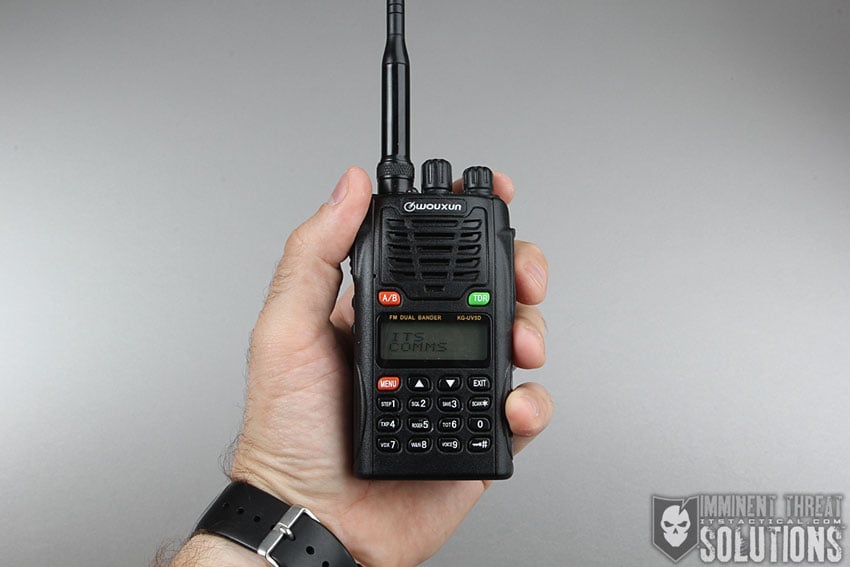
License free, low cost, two-way communication. What’s not to love about MURS? MURS stands for Multi User Radio Service, and is one of the best kept secrets in personal and family radio communications.
Formerly available only for business communications, the FCC has kept five MURS frequencies license-free and open for public use since 2000. Handheld radios broadcasting on MURS frequencies can experience a range of two miles to eight miles depending on terrain and obstructions, while MURS Base Stations can reach up to 20 miles.
The stipulations for MURS use provided by the FCC restrict any transmitter in excess of two watts, but any type of antenna is allowed as long as the tower height (with antenna) is no greater than 60 feet high. All communications must also yield to any emergency communication on the same channel.
Frequencies
The five MURS frequencies are listed below, The 154 MHz channels can be operated on the standard 25 kHz wide band or narrow band mode. The 151 MHz channels can only be operated in narrow band mode.
- 151.820 MHz
- 151.880 MHz
- 151.940 MHz
- 154.570 MHz
- 154.600 MHz
Each of the five frequencies can not only transmit voice, but also data. The best example of this are the driveway alarms which transmit a signal via MURS when the IR sensor is tripped.
Can you hear me now?
Another hidden benefit of MURS frequencies are the PL codes (Private Line codes) or CTCSS (Continuous Tone Coded Squelch System) which are sub-audible tones that allow users to operate on the same channel without hearing chatter directed to other users.
There are 38 PL codes available to each of the five MURS frequencies, which makes for a combination of 190 different MURS channels. While this is not encryption, anyone not operating with the same PL code won’t hear your conversation.
How MURS stacks up
Most everyone has seen the small hand-held walkie-talkies that operate on the FRS (Family Radio Service), the best example of this are the small Motorola Talkabout Radios marketed towards family communication.
Here are some great comparisons courtesy of PRSG.
Compared with FRS (Family Radio Service) at 460 MHz:
- MURS (at 150 MHz) permits four times more power (2 Watts TPO instead the 0.500 Watts ERP limit for FRS).
- At MURS frequencies, signals bend over hills better, but FRS signals are better at bouncing off of surfaces and penetrating into/escaping out of buildings.
- You may connect a MURS radio to an external or exterior antenna. FRS radios must employ a non-detachable antenna. For vehicle-to-vehicle operation with external (roof-mount) antennas, MURS should provide three to ten (or more) times the range possible with FRS radios.
Compared with GMRS (General Mobile Radio Service) at 460 MHz:
- GMRS handheld radios have typically two to five watts transmitter power. GMRS vehicular units transmit typically with ten to 50 watts. There is no limit on the ERP of GMRS stations operating on the primary channels. GMRS stations may transmit with no more the 5 Watts ERP on the seven “interstitial” frequencies (those shared with the FRS).
- GMRS operation requires an FCC license.
- At MURS frequencies, signals bend over hills better, but GMRS signals are better at bouncing off of surfaces and penetrating into/escaping out of buildings.
- For vehicle-to-vehicle operation with external (roof-mount) antennas, MURS should provide one-and-a-half to four times the range possible with GMRS handheld radios also connected to roof-mount antennas. Depending on the surrounding terrain, MURS units connected to roof-mounted antennas might even outperform full-power (50 watt) GMRS mobile units, although the GMRS units should have a greater range in open terrain.
- Many GMRS radios can communicate through repeater stations for extended range (typically up to twenty miles or more, sometimes much more). The new FCC Rules will prohibit repeaters in MURS.
Compared with CB (Citizens Band Radio) at 27 MHz:
- CB radios may transmit with more power than MURS units may, but communications range is highly dependent on channel congestion and atmospheric conditions. CB communications can also be significantly degraded by noise from vehicle ignition systems and from other man-made sources.
- CB signals bend over hills and around obstacles much better than MURS (at 150 MHz) or FRS/GMRS (at 460 MHz) signals.
- Vehicle-to-vehicle MURS communications will probably be comparable and possibly quite superior to that available in the CB service.
- MURS communications will not suffer from the kind of long-range “skip” interference frequently encountered on CB radio at 27 MHz.
Keep in mind on all these comparisons that MURS has it’s benefits, but GMRS requires an FCC license to operate on.
Where to buy?
MURS radios can now be commonly found online at retailers such as Amazon.com and are starting to increase in popularity as more people find out what they’re missing. The great thing about MURS frequencies is that they can be programmed (with or without PL codes) into existing radios which can be a backup to licensed communication. A dedicated MURS radio also makes a good backup radio if your primary means of communication go down.
Resources
PRSG has a wonderful FAQ section where you can obtain more information pertaining to MURS.